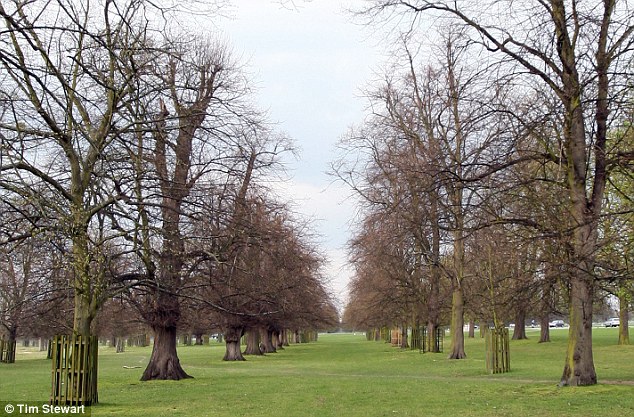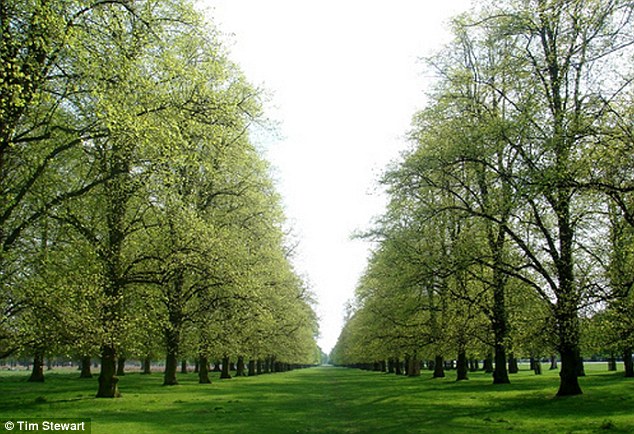
In Chestnut Avenue near Hampton Court Palace, the woodland seems to be trapped in a time warp.
Last April, the horse chestnuts burst to life with budding new leaves covering the branches and were one of the most dramatic, natural outdoor sights of spring in the capital.
Around the country, thousands of trees are still completely bare of leaves after the coldest winter in 31 years.
Species such as the birch, rowan, hazel, hawthorn and blackthorn would normally be in glorious full bloom by now.
While many are completely bare, others have only just started to sprout foliage in recent days thanks to spring finally arriving after Easter.
But many street trees are not expected to leaf at all.
Experts say that tens of thousands are likely to have been killed by the salt used to de-ice roads during the big freeze this winter.
Some species like the oak, ash and plane - which are common street trees - are not due to leaf until the end of April or start of May.
The true scale of tree casualties will only become clear as they fail to leaf in coming weeks.
The Tree Council's rural programmes director Jon Stokes said: 'Trees need warm temperatures to come back to life in spring.
'When temperatures pick up, the buds on branches swell and burst and leaves start to appear.
'The harsh winter has seen too many frosts and it has not been warm enough until now to get the whole leafing process going.
'Many trees are three to four weeks late leafing. Hawthorn and blackthorn are still without leaves.
'Over the last ten days, spring has suddenly arrived and it is all happening now or will do soon with a bang for birch, rowan, hazel and horse chestnut.
'But that is up to a month later than we would have expected.'
But while the spring weather has finally arrived, temperatures are back to normal after the balmy weather at the weekend.
Temperatures this week are likely to remain between 10C and 16C across the country with periods of showers and drizzle.
Britain has around four billion trees with the vast majority in rural areas. But street trees can make a difference to a street.
Mr Stokes added: 'Salt and trees don't mix. It gets around the roots and stops trees drawing in enough water from the soil.
'Over the next few weeks, we will see that real damage has been done to our urban tree population.
'It is likely that tens of thousands of street trees will have suffered because of salt and could die.'
The particularly harsh winter has also delayed the blooming of many woodland flowers.
According to the National Trust, bluebells, which require light and warmth coming into the forest floor to trigger growth, are normally at their height around late April or early May.
But this year they are not likely to be in full bloom until around mid May - the latest peak in flowering for the plant since 1996.
Magnolias and daffodils are also blooming late this year because of the unusually sustained cold weather up to the end of March.




Reader Comments
to our Newsletter